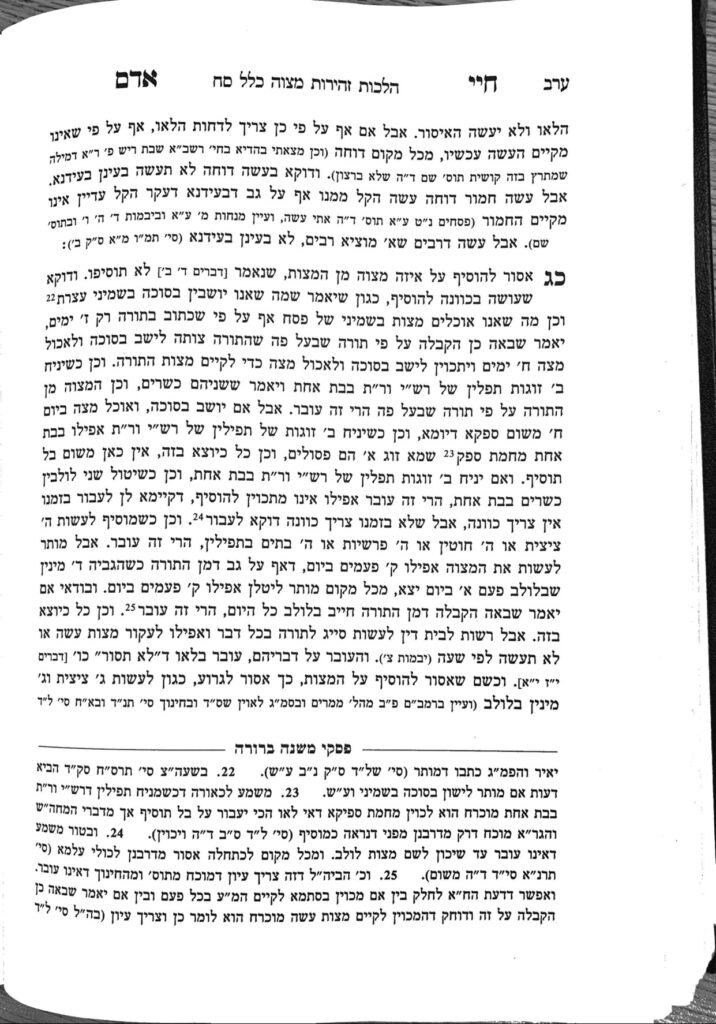We are continuing in siman 22, discussing the concept of asei doche lo saasei. We learned about the concept of be’idna, that asei docheh lo saasei only applies when the asei is fulfilled and the lo saasei is transgressed simultaneously. If one were to first transgress the lo saasei, and only later fulfill the asei, one cannot apply this concept.
However, the Chayei Adam clarifies that the concept of be’idna does not apply when a person is doing something letzorech rabbim, for the needs of the public. In such a case, one may transgress the lo saasei even if they will not fulfill the asei until later. The source for this halacha is a Magen Avraham, in siman 646, where he quotes a Shibbolei Haleket regarding a situation in which one wishes to clear rubble on Yom Tov in a way that they are transgressing a lo saasei (which may not always be the case on Yom Tov) in order to blow shofar. The Gemara says that one may not clear the rubble in such a case, because Yom Tov is both an asei and a lo saasei, and the asei of shofar will not be doche both the asei and lo saasei of Yom Tov (see shiur 1469). The Shibbolei Haleket points out that the Gemara should have asked that it is a situation of asei doche lo saasei which is not be’idna, because the mitzvah of shofar will not be fulfilled until much after clearing the rubble. He concludes that since the Shofar is for the needs of the rabbim, the asei would be doche the lo saasei even if not be’idna, and that is why the Gemara does not give it as an explanation.
There are many other points to discuss regarding asei doche lo saasei, but many of the points are lomdus, so we will hold the discussion here.
In siman 23, the Chayei Adam discusses the mitzvos of bal tosif and bal tigra. A person may not alter a mitzvah or add to a mitzvah. For example, a person decides they will add cinnamon to their arba minim. Similarly, one may not change a mitzvah by detracting from it. In a relationship between husband and wife, if a husband knows his wife likes a certain type of gift, changing it by adding or detracting from it is not what she wants. The greatest expression of the commitment to the relationship is to follow directions. Similarly, regarding our relationship with Hashem, the greatest expression of our commitment to Hashem is to follow His directions, without coming up with our own ways to do things. We will clarify the details in the coming shiurim, be’ezras Hashem.
Summary
- Asei docheh lo saasei applies only where the asei is fulfilled and the lo saasei is transgressed simultaneously (be’idna). However, for a tzorech rabbim, be’idna is not needed.
- Bal tosif and bal tigra are the chiyuvim not to alter a mitzvah by adding or detracting from it.



